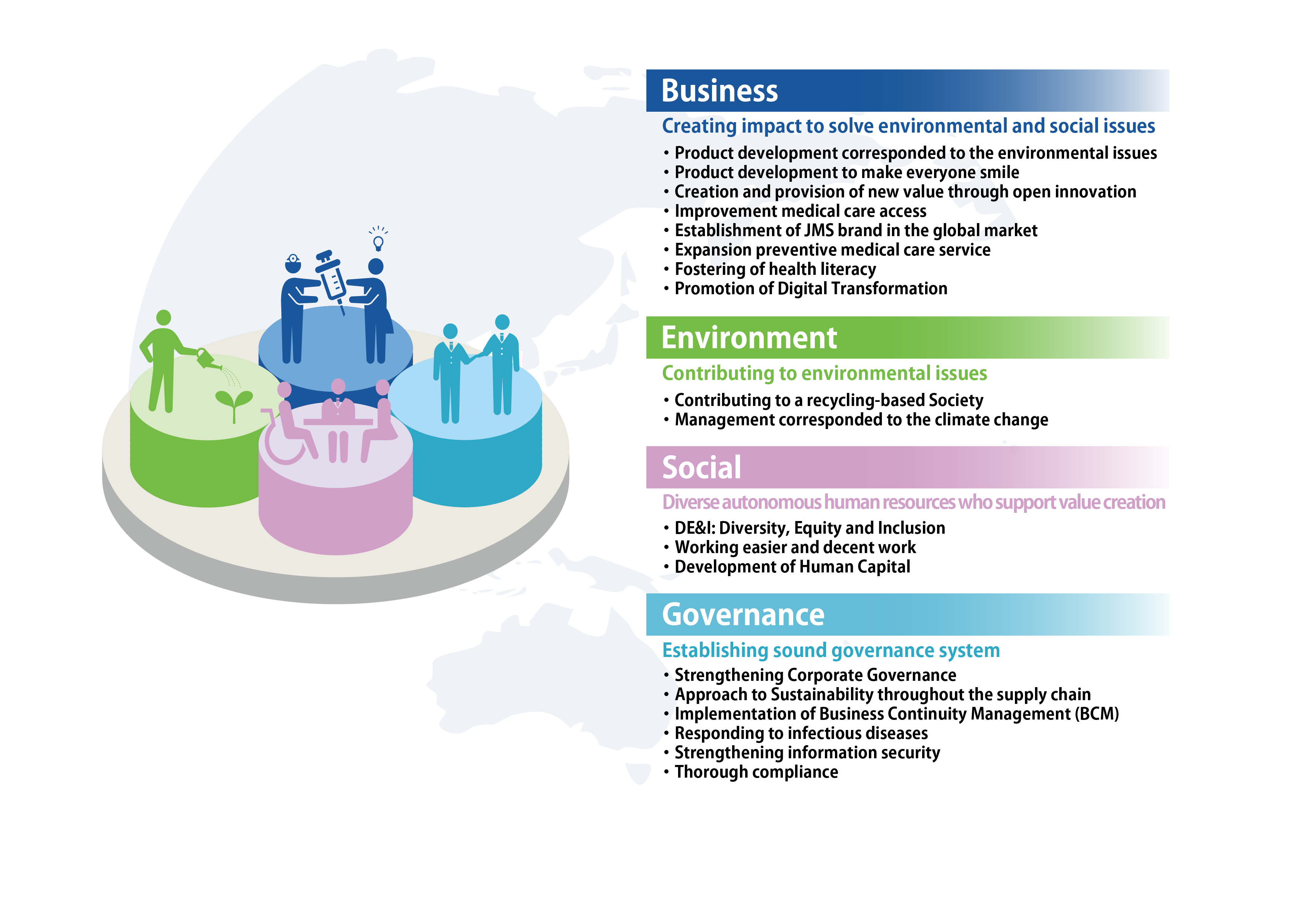Identification of Materiality
What is Materiality?
Materiality refers to those elements which have significant economic and social issues and impacts in company's activities. JMS grasps materiality both in terms of economic and social value. If we identify these materialitie sand take actions, it will lead to prioritize resource allocation, provide value to stakeholders, effectively promote the circuit of capital, and establish a sustainable business model.
Positioning of Materiality
Based on the sustainability fundamental policy, materiality is identified as specific management issues. We promote and put materiality into concrete measures as action plans in the mid-term management plan and business strategies.
Identification of Materiality
We classify materiality into four categories: Business, Environment, Social, and Governance. Business: We focus on the impact and effect on society through our business, and aim to solve social issues and increase our corporate value. Environment: We realize long-term business stability and environmental protection by working on global environment conservation and sustainable use of resources. Social: We focus on the social factors that support the development of diverse human resources and value creation, and enhance employee engagement and contribution to community. Governance: We strengthen legal compliance and risk management through establishing a sound governance system and promote highly reliable management. Specific materiality items for each category are shown as following.

Specific Process
Materiality-specific process is as following

Research and Analysis
We collect information from assessments of ESG rating agencies, industry reports and related reports, and grasp the factors seen as important in the medical device sector from the perspective of investors.
Creating a Value Chain Map
We looked at the big picture of our value chain and analyze the opportunities and impacts on multi-stakeholders at each stage of the value chain leading to R&D, procurement, production, sales, use, and disposal.
Creating a Long List
Referring to SDGs, megatrends, and international indicators and frameworks, we listed in relation to items related to our business activities and created a 96-item long list organized by the impact we cause and the effect we receive from society for each of them. This has organized our approach to respond to the wide range of social issues that our business faces.
Creating a Short List
We integrated duplicate items in the long list and summarized the 24 items of the short list focusing on particularly important social issues and stakeholder expectations.
Impact Analysis
We conducted impact analysis by our directors and external experts* and identified materialities considering the effects on environmental and social issues, and corporate value. We identified 19 materialities in our corporate activities through this assessment process.
*Supported by six experts including ESG consultants, financial institutions, and university professors, etc.
Review Materiality
Materiality is reviewed regularly to respond flexibly changes in the business environment and social conditions. Through this review process, Materiality is continuously optimized in conformity with the changing environment, and contributes to the company's sustainable growth and value proposition to stakeholders.

